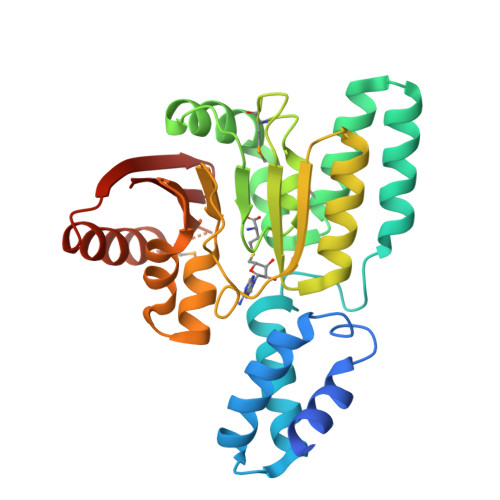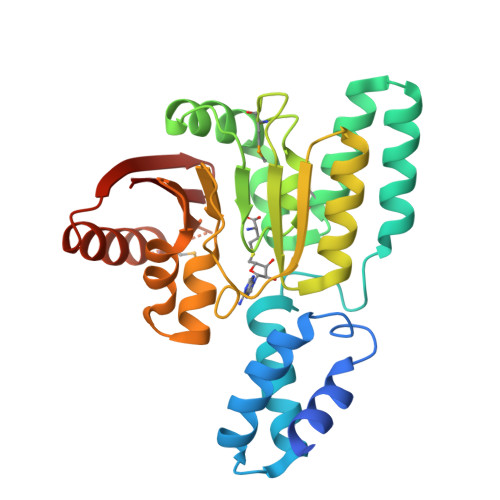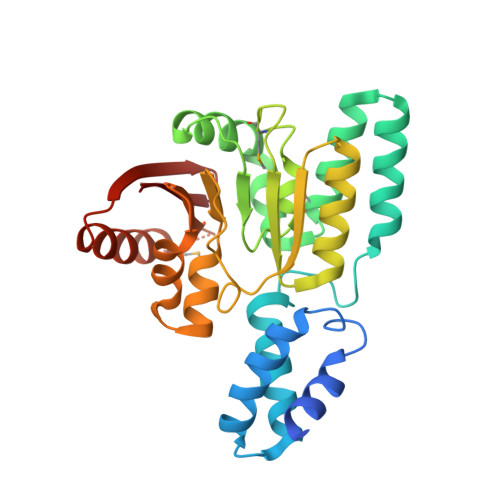Structural basis for the methylation of G1405 in 16S rRNA by aminoglycoside resistance methyltransferase Sgm from an antibiotic producer: a diversity of active sites in m7G methyltransferases.
Husain, N., Tkaczuk, K.L., Tulsidas, S.R., Kaminska, K.H., Cubrilo, S., Maravic-Vlahovicek, G., Bujnicki, J.M., Sivaraman, J.(2010) Nucleic Acids Res
- PubMed: 20194115
- DOI: https://doi.org/10.1093/nar/gkq122
- Primary Citation of Related Structures:
3LCU, 3LCV - PubMed Abstract:
Sgm (Sisomicin-gentamicin methyltransferase) from antibiotic-producing bacterium Micromonospora zionensis is an enzyme that confers resistance to aminoglycosides like gentamicin and sisomicin by specifically methylating G1405 in bacterial 16S rRNA. Sgm belongs to the aminoglycoside resistance methyltransferase (Arm) family of enzymes that have been recently found to spread by horizontal gene transfer among disease-causing bacteria. Structural characterization of Arm enzymes is the key to understand their mechanism of action and to develop inhibitors that would block their activity. Here we report the structure of Sgm in complex with cofactors S-adenosylmethionine (AdoMet) and S-adenosylhomocysteine (AdoHcy) at 2.0 and 2.1 A resolution, respectively, and results of mutagenesis and rRNA footprinting, and protein-substrate docking. We propose the mechanism of methylation of G1405 by Sgm and compare it with other m(7)G methyltransferases, revealing a surprising diversity of active sites and binding modes for the same basic reaction of RNA modification. This analysis can serve as a stepping stone towards developing drugs that would specifically block the activity of Arm methyltransferases and thereby re-sensitize pathogenic bacteria to aminoglycoside antibiotics.
Organizational Affiliation:
Department of Biological Sciences, 14 Science drive 4, National University of Singapore, Singapore.


















